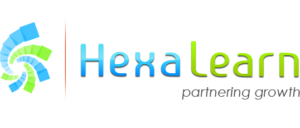SCORM Files Per Language
It appears easy: translate message, swap media, export brand-new SCORM and upload to the LMS. But also for discovering developers, this technique can insidiously double work, balloon costs, and add intricacy to upkeep when establishing multilingual eLearning programs. Let us figure out just how this affects the eLearning development process and just how Educational Developers and programmers can build a lot more scalable multilingual solutions.
1 Development Expenses: Time, Devices, And Variation Control
Translation And Localization Traffic Jams
- Each course upgrade– be it a new test, picture, or conformity modification– indicates rebuilding every language translation. Developers require to repackage, re-test, and re-upload each documents manually, slowing down version cycles down.
- Localization groups should manage language-specific assets (audio, video, captions, text on-screen), all of which need designer intervention for every single SCORM outcome.
Authoring And SCORM Maintenance
- Programmers usually invest hours reconfiguring materializes, changing LMS tracking, and verifying interactions for every version.
- Each language becomes its own “mini-project,” raising QA and LMS screening cycles for programmers and reviewers alike.
Storage And Deployment Challenges
- Maintaining numerous SCORM variations takes in extra repository room and LMS transmission capacity. Designers need to additionally keep constant file structures throughout all variations to avoid complication.
2 Indirect Development Expenses: Complexity And Threat
Variation Wander Throughout Languages
- When designers handle several SCORM results, updates may not turn out evenly. Learners in different regions may access out-of-date variations– a problem that reflects poorly on both L&D and conformity teams.
Higher Assistance Tons
- Bugs one-of-a-kind to one language version usually need developer-level debugging.
- Dissimilar SCORM settings can trigger inconsistent LMS tracking or completion coverage– draining growth and support resources.
Scalability Roadblocks
- For eLearning developers, every added language means brand-new authoring, QA, and product packaging tasks. As multilingual demand expands, maintaining parity throughout variations becomes unsustainable.
3 Effect On Discovering Experience
Delayed Rollouts
- Students might wait weeks for updated versions in their language since designers are hectic rebuilding multiple SCORMs.
Inconsistent Knowing High Quality
- Differences in navigating labels, captions, or UI designs throughout versions can puzzle learners and break layout consistency.
- Without unified advancement operations, availability aspects (alt text, transcripts, captions) might differ in top quality from one language to one more.
Smarter Techniques For Developing Multilingual eLearning
Create One Program– Release in Many Languages
New writing software allow developers to construct a single SCORM package with language selection controls. This method maintains the training course reasoning centralized however saves the translations as modular resources– making it much simpler to get regular results across languages.
Funded material – short article continues listed below
Trending eLearning Writing Devices
Externalize Text And Media Possessions
By maintaining message, inscriptions, and UI tags in exterior resource data (e.g., XLIFF, JSON, XML) the SCORM can be modified by developers in regards to translations without recreating the entire SCORM. This approach promotes quicker updates and enhanced partnership between localization teams and Training Developers.
Leverage LMS Localization Features
Numerous LMS systems sustain multilingual UI elements, notices, and also course titles. Designers can focus on content-level localization instead of duplicating entire plans.
Automate QA And Version Control
Integrating variation control (e.g., Git, SVN) and automation tools assists eLearning programmers track adjustments, rebuild multilingual programs effectively, and stop variation drift. Automated screening manuscripts can check for damaged web links, missing out on inscriptions, or irregular shows up throughout languages.
The Growth ROI
Mounting the problem from an advancement perspective aids stakeholders understand the business case:
- Decreased workload
For eLearning designers: fewer rebuilds and hands-on product packaging tasks. - Faster updates
Across all languages when regulative or content adjustments take place. - Consistent student experience
Across areas, improving high quality and engagement. - Lower long-term upkeep prices
Making it possible for teams to scale global discovering programs efficiently.
Verdict
For eLearning developers, having separate SCORM documents by language can make a simple localization task right into a maintenance migraine. Real potential is in reconsidering establishing multilingual eLearning style– welcoming modular, automation-centered layout principles that simplify localization, guarantee version uniformity, and protect high quality at range.
With the application of centralized material models, LMS localization abilities, and automation platforms, growth teams have the ability to bypass tedious SCORM packaging repeating to concentrate on what is essential: the style of compelling, easily accessible, and effective learning experiences for worldwide audiences. This unified technique not just simplifies content delivery but additionally makes sure constant student involvement and efficiency throughout all languages and areas.
